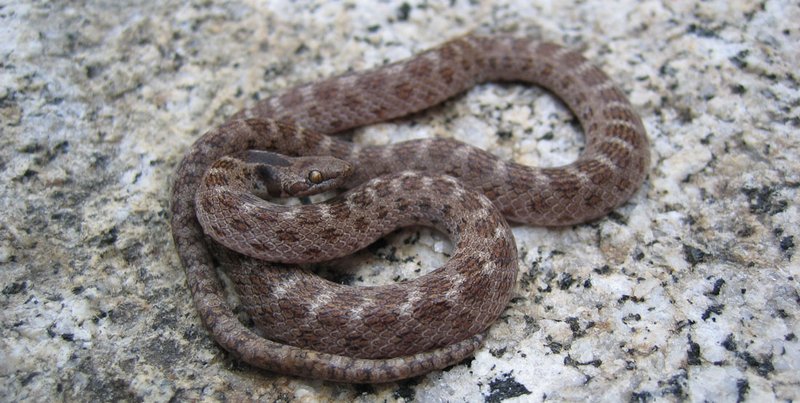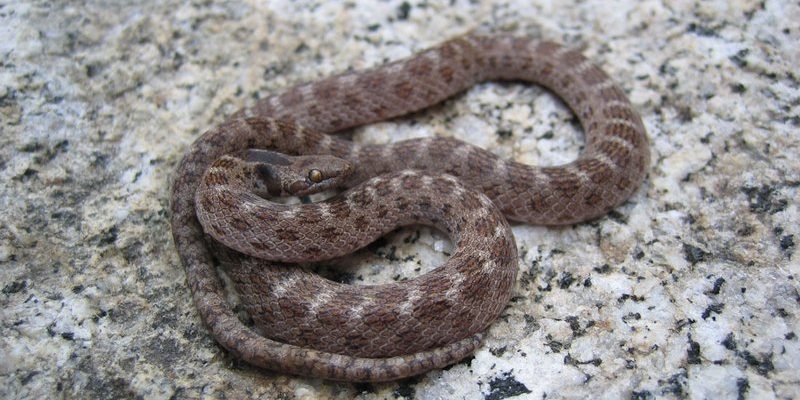
The Night Snake might not be the most famous serpent out there, but it certainly has its charm. Imagine wandering through the woods at twilight, when the sun dips below the horizon and a whole new world awakens. This is when the Night Snake comes to life, slipping out into the cool air to hunt and explore. Known for its elusive nature and unique hunting habits, it’s a fascinating creature worth getting to know.
Often mistaken for other, more common snakes, the Night Snake has a special set of adaptations that help it thrive in its nocturnal lifestyle. With its slender body and muted coloration, it blends seamlessly into its environment—a true master of disguise. If you’re curious about what makes this snake tick, we’ve got a lot to cover, from its habitat and diet to some quirky behaviors that might surprise you.
Physical Characteristics of the Night Snake
At first glance, the Night Snake might seem unassuming. Typically, they measure between 20 to 40 inches in length, making them a relatively small snake compared to their more notorious relatives. Their bodies are sleek and slender, covered with smooth scales that can be a variety of colors, primarily shades of brown and gray. These muted tones help them blend in beautifully with the rocky or leaf-littered ground they often inhabit.
What sets the Night Snake apart from other snakes is its unique patterning. Many have light and dark blotches that can resemble the dappled sunlight filtering through leaves. This not only serves as camouflage from predators but also aids in surprising their prey—usually small lizards and insects. Their large, expressive eyes are another standout feature, which help them navigate in low-light conditions.
When threatened, Night Snakes can exhibit some fascinating behaviors. They often remain motionless, relying on their camouflage to avoid detection. If they do feel the need to defend themselves, they may release a foul-smelling musk as a deterrent. While they’re not aggressive, they can strike quickly if provoked, so it’s wise to observe from a distance.
Habitat and Distribution
The Night Snake primarily dwells in the western regions of North America, favoring environments such as grasslands, scrublands, and even mountainous areas. These habitats often feature rocky outcrops or dense vegetation, perfect for hiding from both predators and prey. They are most commonly found in areas with low shrubbery and scattered rocks, providing ample opportunities for shelter.
Adaptable creatures, Night Snakes can also thrive in disturbed environments like suburbs and agricultural lands, as long as there are hiding spots involved. Their preferred microhabitats tend to be near moisture sources, such as riverbeds or edges of woods where insects and small reptiles abound. If you’re ever hiking in these regions at dusk, you might just catch a glimpse of one slithering through the underbrush.
As the world changes and habitats are altered by human activity, the Night Snake’s range may be affected. While they are currently not considered endangered, their numbers can fluctuate based on habitat destruction and environmental changes. Conservation of their natural areas is vital to ensuring the survival of this nocturnal marvel.
Diet and Hunting Behavior
When it comes to finding dinner, the Night Snake is a clever hunter. Their diet primarily consists of small lizards, such as skinks and anoles, as well as insects. Because they are nocturnal, their hunting strategy is tailored to the darkness. They rely on their keen vision and sense of smell to locate food in low-light conditions, making them effective nocturnal predators.
During the hunt, Night Snakes employ a method known as ambush predation. You might imagine them lying in wait, perfectly camouflaged among the leaf litter or rocks until a unsuspecting lizard or insect wanders too close. In a flash, they strike swiftly, wrapping their bodies around their catch before swallowing it whole. This stealthy approach is critical for their survival, allowing them to conserve energy while still snagging a good meal.
Interestingly, they have a unique way of handling their prey. Night Snakes possess a specialized jaw structure that allows them to ingest prey larger than their heads by dislocating their jaws. This means that, even though they are small snakes, they can consume a meal that seems quite large in proportion to their size. You might find it fascinating how nature equips these creatures to thrive, even in a world where they are relatively small players.
Breeding and Lifespan
The breeding season for Night Snakes generally occurs in the spring, just as temperatures begin to warm up. After a brief courtship, the female lays a clutch of 3 to 15 eggs. They typically choose warm, moist areas like rotting logs or leaf litter to incubate their eggs, which is crucial for the survival of the developing embryos.
Once laid, the eggs are left to develop on their own. After a gestation period of about six to eight weeks, the baby snakes emerge, already equipped to fend for themselves. These hatchlings are miniature versions of their parents and are adept at hunting small insects as soon as they break free from their shells.
In the wild, Night Snakes can live anywhere from 5 to 10 years, depending on factors like predation and environmental conditions. In captivity, with proper care, they might endure even longer. Understanding their life cycle and reproductive habits gives us greater insight into their role within the ecosystem, highlighting the importance of protecting their natural habitats.
Conservation Status
Currently, the Night Snake is not considered endangered; however, understanding their habitat needs is critical. As their environments are increasingly affected by urbanization, agricultural practices, and climate change, conservation efforts are essential to ensure that these fascinating snakes can continue to thrive. Protecting natural habitats is key, not just for the Night Snake, but for the entire ecosystem they inhabit.
Community awareness plays a significant role in conservation. By educating the public about the importance of these creatures, we can foster a deeper appreciation for biodiversity. Many people are unaware of how even the smallest species contribute to the overall health of the environment, so spreading the word can make a difference.
Organizations focused on wildlife conservation are working tirelessly to monitor snake populations and protect their habitats. By participating in local conservation efforts or simply being mindful of the natural world around us, we can contribute to the preservation of the Night Snake and countless other species that share our planet.
Interesting Facts About Night Snakes
| Scientific Name: | Hypsiglena torquata |
| Size: | 20 to 40 inches |
| Habitat: | Grasslands, scrublands, and rocky areas |
| Diet: | Small lizards and insects |
| Behavior: | Nocturnal ambush predators |
| Lifespan: | 5 to 10 years in the wild |
FAQ
What do Night Snakes eat?
Night Snakes primarily feed on small lizards and insects. Their hunting technique is quite interesting, as they often lie in wait to ambush their prey in low light conditions. This nocturnal hunting strategy showcases their adaptability and skill as predators in their natural habitats.
Are Night Snakes dangerous to humans?
No, Night Snakes are not considered dangerous to humans. They are shy and tend to avoid confrontations. If threatened, they may release a musk or try to escape rather than bite. While they can strike if provoked, their primary goal is to blend into their surroundings and avoid detection.
Where can I find Night Snakes?
You can find Night Snakes primarily in the western regions of North America, inhabiting environments like grasslands, scrublands, and rocky areas. They prefer habitats with low shrubbery and moisture sources, so keep an eye out for them in those settings—especially at dusk when they become active.
How do Night Snakes reproduce?
Night Snakes reproduce in spring, with females laying clutches of 3 to 15 eggs. The eggs are often hidden in warm, moist locations like rotting logs. They leave the eggs to develop independently, and after about six to eight weeks, the hatchlings emerge ready to hunt for themselves.
What threats do Night Snakes face?
While Night Snakes are currently not endangered, they face threats from habitat destruction and environmental changes caused by urbanization and agriculture. Protecting their habitats is vital for their survival, as is raising public awareness about the importance of these creatures in the ecosystem.
How long do Night Snakes live?
In the wild, Night Snakes can live for about 5 to 10 years, depending on factors such as predation and environmental conditions. In captivity, with proper care, they might live even longer. Their lifespan highlights the importance of providing a suitable environment for them to thrive.
What is the role of Night Snakes in the ecosystem?
Night Snakes play a crucial role in their ecosystems as both predators and prey. By controlling the populations of small lizards and insects, they help to maintain a balanced food web. At the same time, they themselves are part of the diet of larger predators, contributing to the overall health and stability of their habitats.
Can Night Snakes be kept as pets?
Yes, Night Snakes can be kept as pets, but potential owners should do their research beforehand. They require specific care needs, including appropriate housing, temperature, and humidity levels. Proper knowledge about their diet and behavior is crucial to ensure they thrive in captivity.
Are Night Snakes active during the day?
No, Night Snakes are primarily nocturnal, meaning they are most active during the night. They use their heightened senses to hunt and navigate in the dark, making them effective predators in low-light environments. If you’re hoping to spot one, your best bet is to look at dusk or night.
Do Night Snakes have any natural predators?
Yes, Night Snakes face threats from a variety of natural predators, including birds, mammals, and larger snakes. Their ability to blend into their surroundings helps them avoid detection, but they must always remain vigilant to stay safe from these larger threats.
What sounds do Night Snakes make?
Night Snakes are generally quiet creatures and do not make notable sounds. However, they may hiss or rattle lightly if threatened. This behavior serves as a warning to potential predators, although their primary defense is to rely on their camouflage and remain undetected.

